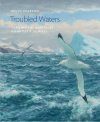"Bruce Pearson first visited Bird Island, South Georgia, in 1975, a visit that was to exert a profound influence on his subsequent career as an artist. Over three decades later, he returned to the Southern Ocean to document the interactions between seabirds and fishermen. This book is both a record of these trips and a reflection on the continuing plight of albatrosses and other seabirds.
The book has six main sections, arranged more or less chronologically. The subject matter includes working with the British Antarctic Survey on Bird Island in 1975, returning to the Southern Ocean many years later, and a trip on a longliner off South Africa to document interactions between fisheries and seabirds. The text is engagingly written, and while each chapter has a main theme, there are always interesting diversions along the way, covering topics such as thoughts on art, the practicalities of working in a rough sea from a small yacht, and musings on the relationship between man and the natural world. Each chapter is copiously illustrated, and there are small boxes to describe a range of topics such as albatross taxonomy, aspects of seabird biology, conservation agreements, and techniques for mitigating seabird mortality in fisheries.
But the heart of the book comprises Bruce Pearson’s sketches and paintings. These range from detailed specimen studies of blue petrel Halobaena caerulea and cape petrel Daption capense, through rapid field sketches of albatrosses and petrels at sea, to atmospheric seascapes that capture perfectly the special atmosphere of South Georgia.
I can trace my interest in the way artists capture wildlife back to Eric Ennion’s charismatic illustrations in his early book The House on the Shore (Routledge & Kegan Paul, 1959); here were images of birds which were unquestionably alive. Reaction to wildlife art is a very personal thing, but for me the most critical question is: has the artist caught the essence of the bird? In my view there is nobody at present who can capture seabirds in their element as well as Bruce Pearson, and the artwork in Troubled Waters is right up there with two of my great favourites of wildlife art, Lars Jonsson’s Birds and Light (Christopher Helm, 2008) and James McCullum’s Arctic Flight (Langford Press, 2007).
This is a wonderful book, and there are two reasons for adding it to your bookshelf. The first is that you are helping to support seabird conservation, and the second is Bruce Pearson’s consummate artwork. It deserves a place on the bookshelf of anyone interested in seabirds, remote places or wildlife art."
- Andrew Clarke, www.britishbirds.co.uk, 20-12-2012



















































